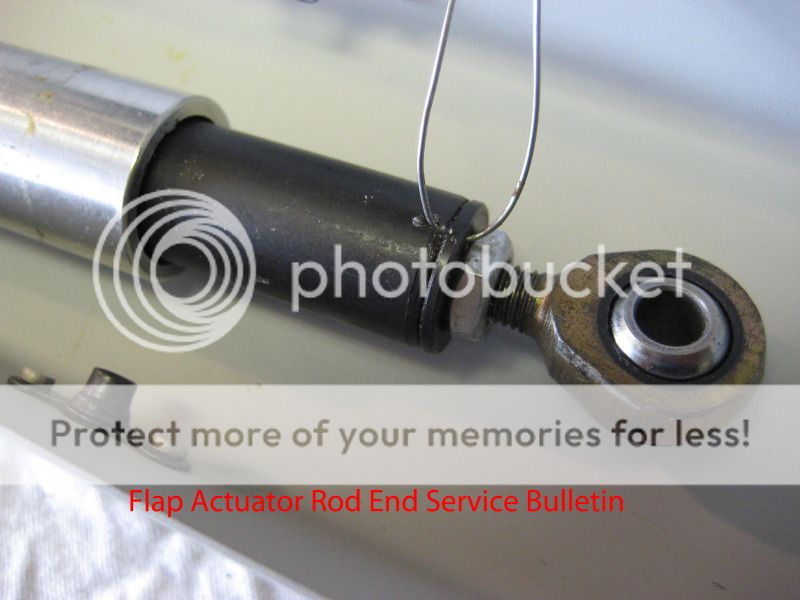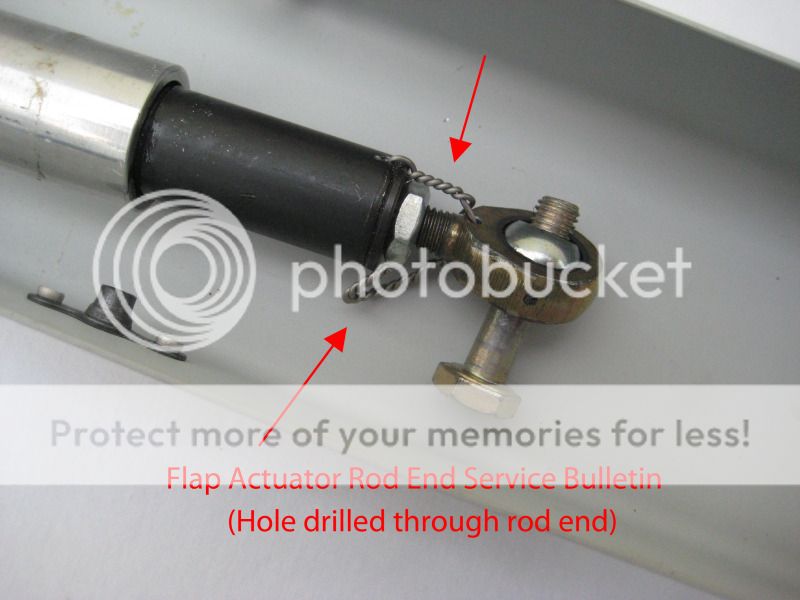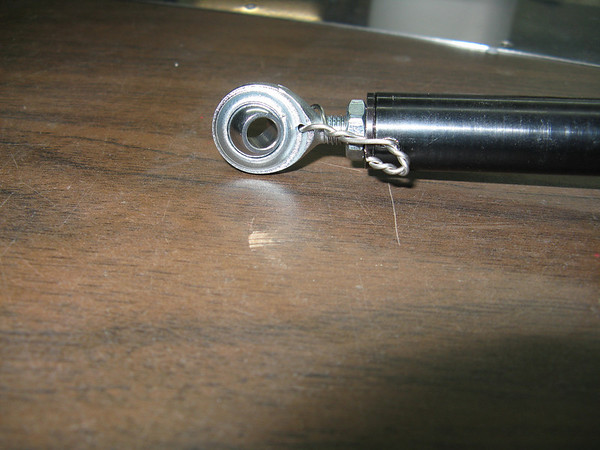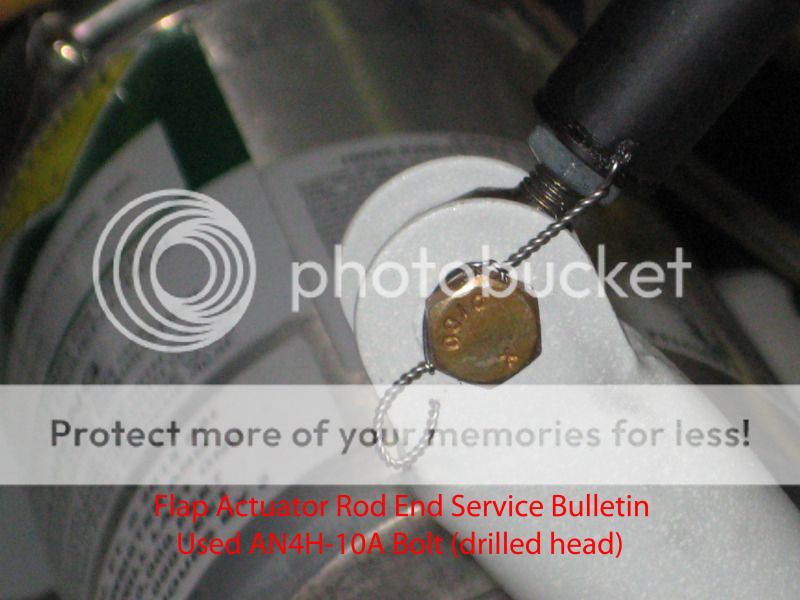Bear Creek Skunkworks
Active Member
Just wanted some opinions.
I have drilled the the pain in the _______angled hole to safety wire the flap actuator to the rod end bearing a long time ago . Upon further review prior to final installation of the flap actuator assembly, there is very little material between the safety wire hole and the edge of the actuator tube due to avoiding the jam nut. If this is a significant concern? I was thinking of spot TIG welding the end cap onto the actuator tube. Has anyone had these apart? Also what is the failure mode if the safety wire doesn't hold the end of the actuator on? Seems to me there should have been a hole drilled perpendicular thru the end cap and shaft with a flush roll pin and safety wire installed not some little bit of metal holding the safety wire.
Just thinking,
Terry
I have drilled the the pain in the _______angled hole to safety wire the flap actuator to the rod end bearing a long time ago . Upon further review prior to final installation of the flap actuator assembly, there is very little material between the safety wire hole and the edge of the actuator tube due to avoiding the jam nut. If this is a significant concern? I was thinking of spot TIG welding the end cap onto the actuator tube. Has anyone had these apart? Also what is the failure mode if the safety wire doesn't hold the end of the actuator on? Seems to me there should have been a hole drilled perpendicular thru the end cap and shaft with a flush roll pin and safety wire installed not some little bit of metal holding the safety wire.
Just thinking,
Terry








